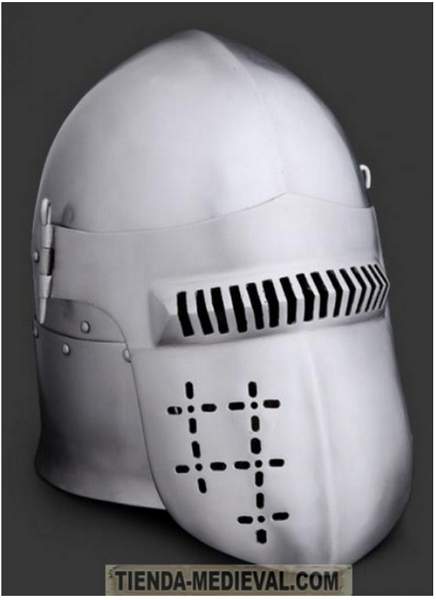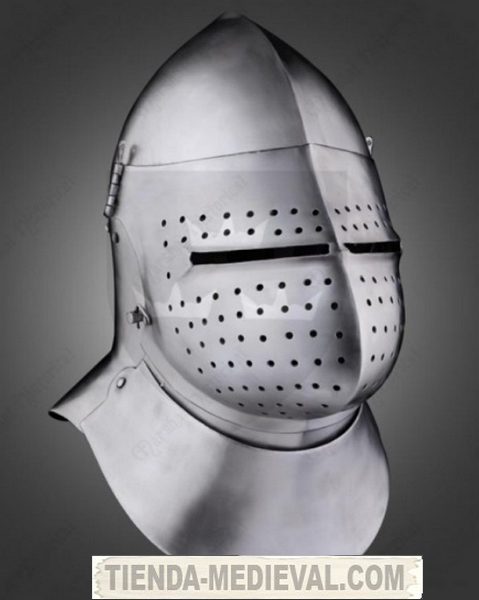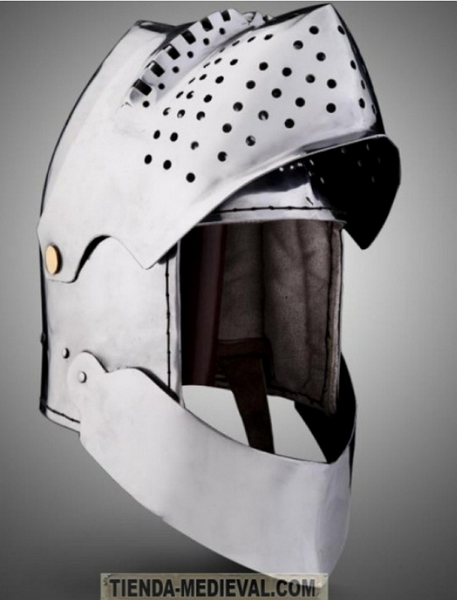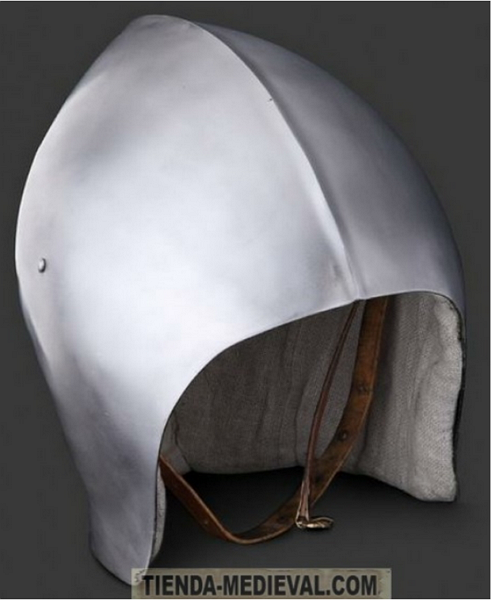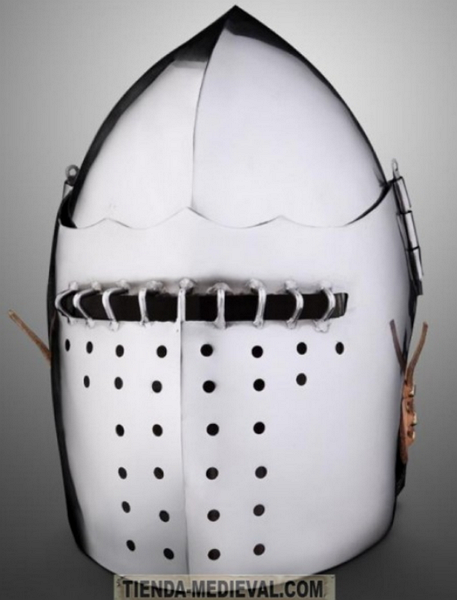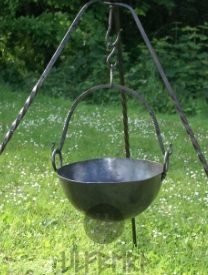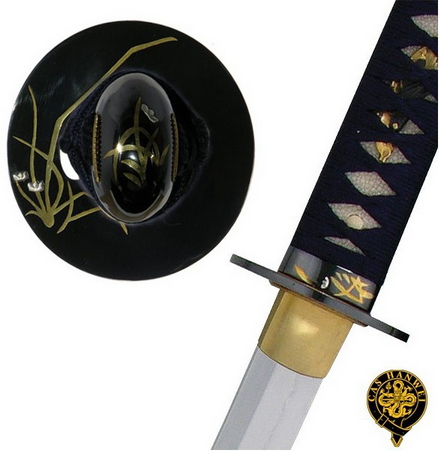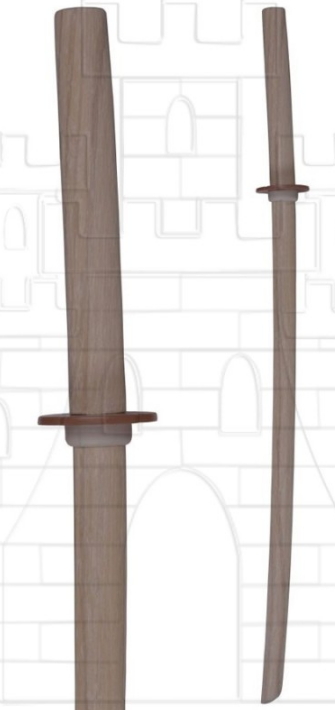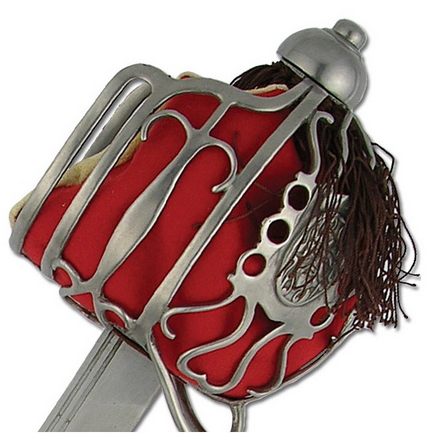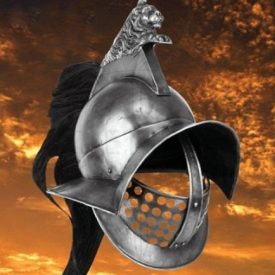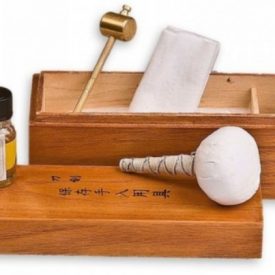The medieval bascinet came into use in the thirteenth century, with the development of conical helmets, to protect the sides of the head and neck, but leaving the face exposed. It was lighter than the helmet. By the mid-fourteenth century, the bascinet was equiped with a mobile display attached to the front of the helmet with a very angled surface to repel the blows.
The vents used to go on the right side, not allowing the entry of a spear point or the peaks of a war hammer. To this end, the hinge pins were fitted with a small strings attached to the visor. If damaged, the frontal side could be removed.
Should notice the cracks in the viewfinder. As shown, are disposed at an angle down the ends with upward orientation so that its wearer, to look ahead, had to tilt his head slightly forward. This design was intended, to impede the entry of anything aimed at his face. If a spear or an arrow slammed into the visor and, because of its shape, leaving deflected up, the warrior could not get hurt in the eye. To avoid that possibility, there were models that had bars on the slits.
On the other hand, and considering its width, usually less than 1 cm long, the vision was very limited. The downward inclination offers a “sad look” to the visor, because that way it could have a little more lateral viewing angle. The natural position, carrying the bassinet, forced to look downward. Addition, if the user throws his head back because of a stroke, the possibility that something entered through the visor decreases.
The weak point of the bascinet was that a well-placed blow, could sink the visor over the mouth or the lower jaw of the wearer, or bounce down hitting his throat. Towards 1380, was further refined by providing a ruff that made the bassinet weight fell on the shoulders rather than the head, and the pointed shape of the visor was replaced by a round. Similarly, the lateral discs were expanded for added protection.
The interior of the bascinet was provided with padded leather, lining or cotton headscarf that, similar to those of the current military helmets, could be regulated depending on the user’s head and helped to cushion the blows of blunt weapons. A full bascinet with visor, despite reaching 7.2 kg, were manufactured later with lightest metal and the weight did not exceed 4 kg.
